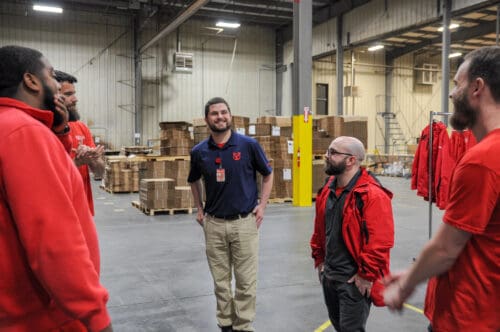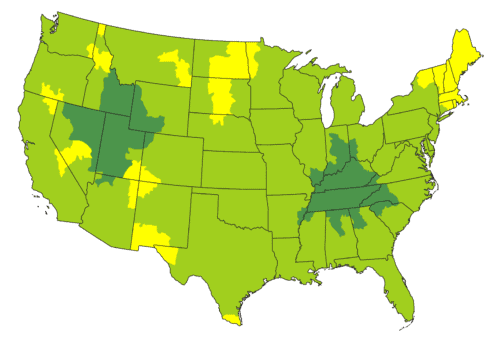Most eCommerce companies look at fulfillment costs the wrong way. ECommerce fulfillment is a significant expense, so, understandably, online sellers want to keep costs down. But order fulfillment isn’t like buying a car, where you can shop around to find the dealer with the lowest price on the make and model you want. Every 3PL is different, which complicates your calculation of fulfillment costs.
Here’s a breakdown of the fulfillment costs you can expect, how to understand the actual fulfillment services pricing, and hidden expenses to include when you calculate fulfillment costs.
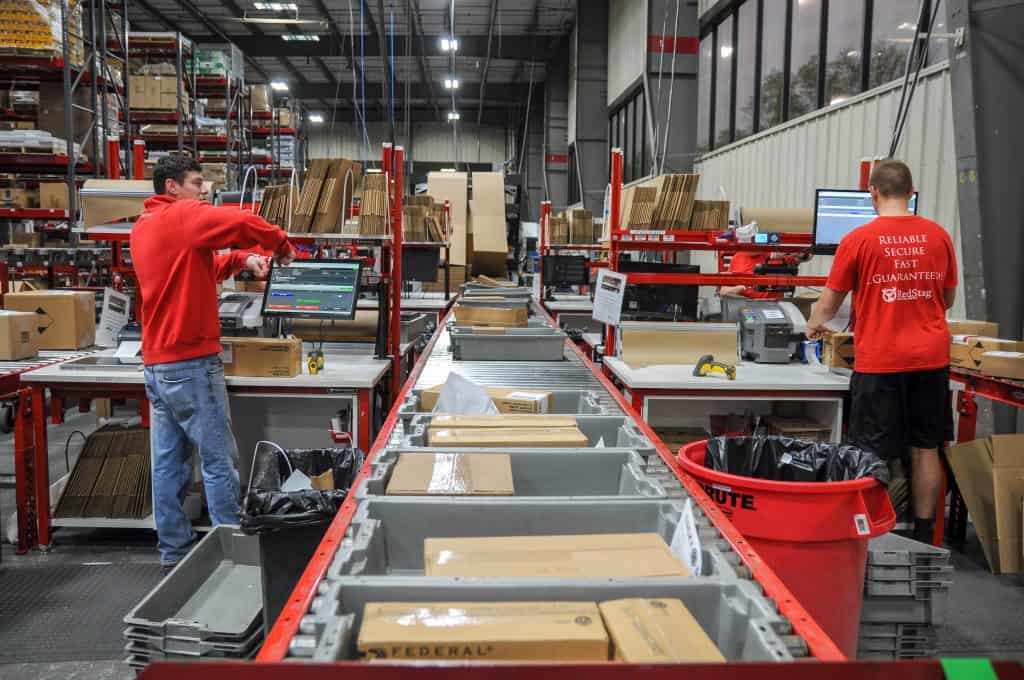
How much does fulfillment cost?
Fulfillment services break down into four basic categories plus several additional costs that your business may or may not incur.
Receiving
Most 3PLs have a charge for receiving and putting away inventory. Receiving can be charged by the hour, as a flat fee, or by the pallet.
Storage
You’ll pay a storage fee for the space your products use in the warehouse each month. There are different models to calculate storage fees. The cubic storage model is the most precise because it charges you for the air space occupied by your goods. Some warehouses charge a monthly fee per pallet, no matter how much or how little you have on each pallet.
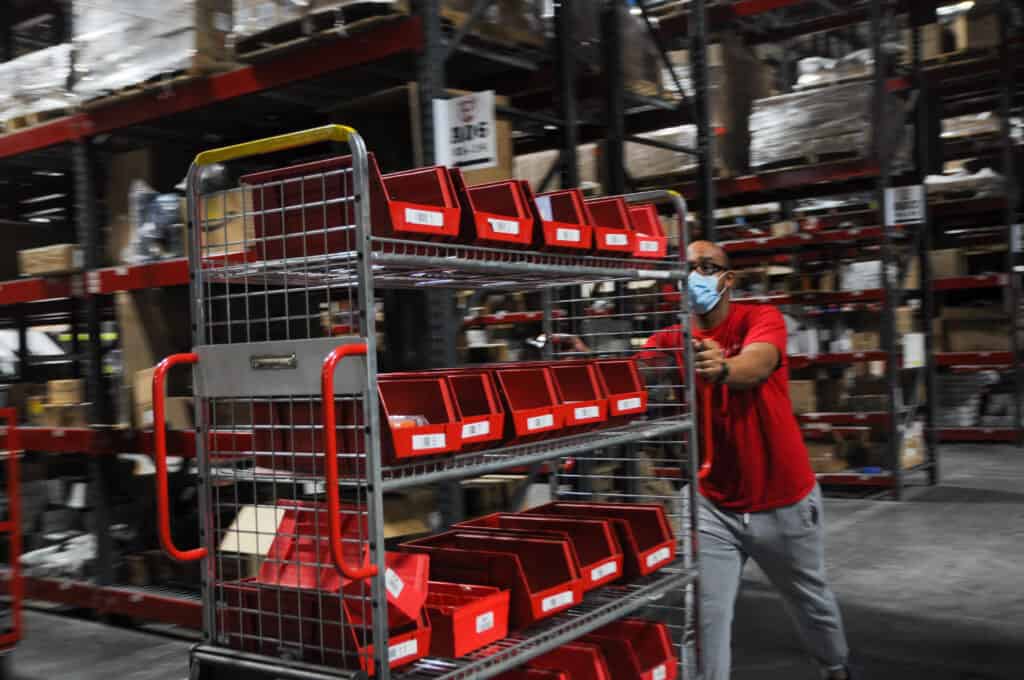
Pick and pack fulfillment fees
Pick and pack fulfillment fees cover the cost of pulling items for your orders, boxing them, and labeling them. Commonly, fulfillment centers will charge a package fulfillment fee that covers picking the first item, plus a smaller additional fee for each additional item. For example, suppose the picking fee is $2.00 for the first item and $0.30 for each item added to the box. An order that contains four SKUs would have a pick and pack fee of $2.90. In addition, an order with multiple items will need an overbox, which is an additional fee. Some single-item orders may be shipped in the manufacturer’s packaging, which saves the box fee.
If an order needs to be boxed rather than shipped in the manufacturer’s packaging, it will incur a packaging fee as well.
Shipping costs
Shipping costs are charged by the carriers, not your fulfillment warehouse, but your 3PL still plays a role in shipping costs. For instance, some 3PLs, like Red Stag Fulfillment, get shipping discounts and pass those on to you.
The factors that affect shipping costs include:
- Service level (i.e., ground, air, overnight, etc.)
- Distance traveled (how many shipping zones from the warehouse to the customer)
- Actual weight
- Dimensional weight
- Special handling fees (for hazmat, fragile items, etc.)
You can expect to pay these four standard fulfillment costs no matter what 3PL you use.

Minimum monthly fee
Some 3PLs have a monthly minimum fee. For example, you might meet the monthly minimum billing requirement if you ship at least 200 orders. If you have a slow month where your orders dip below 200, you would have to pay the minimum fee, which will be higher than your pick and pack costs.
Warehouse fees
Some 3PLs charge a fee for each warehouse where you store stock. For example, if the monthly warehouse fee is $50 and you ship from 10 of the company’s warehouses, you pay $500. If you ship from five warehouses, your monthly charge is $250.
Reverse logistics
You could have returns shipped directly back to your company. Then you have to do the labor, but you save on reverse logistics charges. But a 3PL can do an excellent job and take returns off your hands. The warehouse fees associated with returns include storage, disposal, restocking, and handling charges.

Kitting
Kitting is an add-on service offered by some 3PLs (including Red Stag Fulfillment) to pre-assemble groups of SKUs. While kitting is an extra fulfillment cost, it can save money and time during the pick and pack process and improve fulfillment accuracy.
Other special services
Fulfillment warehouses today offer a range of services that add value but can also add to your fulfillment costs:
- Hazmat handling and storage
- Cold storage
- Food product handling
If your merchandise needs special handling, make sure you get clarity on the costs ahead of time.

How NOT to calculate fulfillment costs
Comparing fulfillment services pricing as straight-across line items won’t give you an accurate picture of your fulfillment costs. You might think of it as purchasing a major appliance. One dishwasher might cost $500 while another is $800. However, suppose the $500 model breaks down, often requiring service calls at $100 per call, while the more expensive model works without a hitch for several years. It will only take four service calls for the cheap dishwasher to become the more expensive one. Add to that the inconvenience of the downtime when you can’t use the appliance, and it’s clear which is the better deal.
Fulfillment costs are similar. If you’re shopping for a new 3PL, storage or pick and pack fees don’t tell the whole story. For example, consider a warehouse with a $1.00 base fee for pick and pack fulfillment, and another has a $1.50 base fee. That’s a big price difference that will add up after shipping thousands of orders. But you must include other factors in the mix, such as inventory accuracy and fulfillment errors. If the lower-cost 3PL has twice the fulfillment error rate, your cost of customer service and returns could wipe out the difference in picking fees. And that’s not considering the long-term damage to your company if even a few customers stop shopping with you each month because their orders were wrong.
To accurately calculate fulfillment costs, you need to consider all the factors fulfillment impacts, including customer satisfaction and brand loyalty.
So, if a simple side-by-side fulfillment cost comparison won’t tell you which 3PL is the better value, how do you understand where your fulfillment costs will be lower? We spoke with Ryan Marine, a business analyst for Red Stag Fulfillment, to uncover the hidden costs of fulfillment and give you tips on avoiding nasty surprises in your 3PL bill.

“Red Stag is behind the curtain to the end consumer,” Marine says. “We are an extension of our merchant’s brand.” Your customers won’t blame the fulfillment company if anything goes wrong with their order — they will blame you. And that can hurt your brand.
“Any time an order goes awry there’s a possibility that the customer won’t return to the website, even if they have been a customer for a long time.” — Ryan Marine, Red Stag Fulfillment Business Analyst
He had several practical tips to get an honest evaluation of your fulfillment costs up front and figure out if you’re getting the best fulfillment services for your money.
Estimate the price of a typical order
Rather than performing the calculation yourself, Marine suggests providing sample orders to a prospective 3PL. Fulfillment pricing is complex, and outsourcing this calculation can help you avoid errors in estimating your fulfillment costs and hold the 3PL accountable in the event the expected pricing doesn’t meet reality.
Use customer data to figure out real-world shipping costs
Your shipping costs with a 3PL will depend on the shipping zones between its warehouse locations and your customers. “It’s easy to be fixated on the rate per zone,” Marine says. “But it’s better to have a holistic analysis of what the true cost will be.”
He suggests companies analyze customer data to pinpoint specific zip codes you ship to and the frequency of those shipments. Get pricing for order fulfillment to where your customers live.

Be realistic about how many warehouses you will use
Marine cautions online sellers to be realistic about the number of warehouses among which you can effectively balance inventory. Inventory optimization is difficult, and you’re only driving down shipping costs if your inventory is in the right spot when orders flow in.
A 3PL that promises numerous warehouse locations and low shipping zones may seem appealing. But beware that you may not get the promised benefits if your inventory isn’t allocated optimally.
Weigh extra inventory costs against shipping from too many warehouses
Splitting your order fulfillment among more warehouses can get you closer to your customers and potentially reduce your shipping costs, but it can come at a steep price in inventory. Marine notes that if you have 100 units of a SKU stored in two warehouses, you can’t divide that and place 20 units in each of five warehouses. You need to have safety stock in every location, so you might have to order 200 units instead of 100.
Your sales volume hasn’t increased, so it will take longer to turn the merchandise. You could get stuck with un-salable items at the end of a season. And, if you run out of inventory in one warehouse, you could end up shipping orders from another location much farther from your customer.
If you sell large or high-value items, the carrying costs of the extra inventory can drown your profits. And, if you sell small or lightweight items, you might not benefit from the lower shipping costs when you reduce the number of shipping zones. That’s because lightweight items often ship for a minimum parcel charge, no matter how many zones they cross.
Red Stag Fulfillment can ship to 95% of U.S. addresses in two days or less from just two national fulfillment locations. So you don’t have to divide your stock between a lot of warehouses to get fast, low-cost fulfillment.
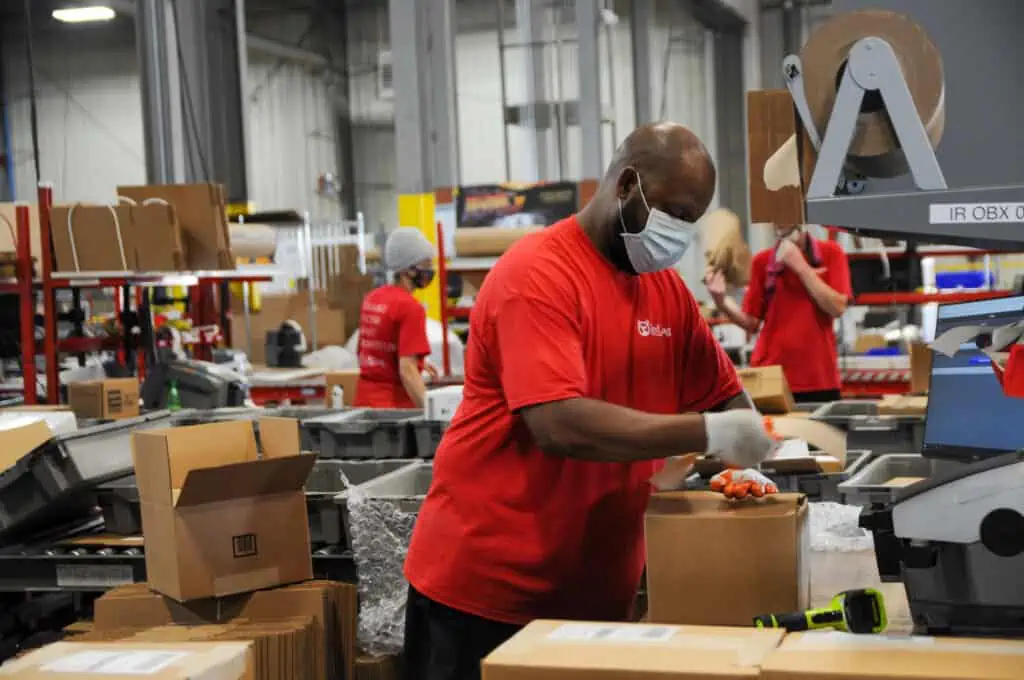
Compare apples to apples for service levels
When shopping for a 3PL, it’s critical to compare fulfillment costs for the same or similar service levels. That’s essential both for shipping costs and fulfillment services.
“Make sure that all your fulfillment companies quote the same service level,” Marine says. Be aware of what you’re getting in each quote. Don’t compare a quote for a budget shipping method or the lowest fulfillment service level against a premium service.
Ask about penalties and unclear fees
Fulfillment companies may assess penalties or hidden fees for services that you don’t see until your first bill. For example, Amazon specifies how shipments must be prepped and labeled to enter FBA warehouses. If you don’t follow the directions, you could incur an extra charge or have your shipment turned away. And some fulfillment companies add costs that aren’t apparent when you first sign on the dotted line.
Eliminate inventory shrinkage
Inventory shrinkage can cost your business more than you think. First, many 3PLs have a shrinkage allowance, which means you’re liable for a certain percentage of loss or damage to your goods in their warehouse. But, even if you get reimbursed for the cost of lost items, shrinkage still impacts your business.
“Not only will you have to replace this financially, but there’s also a lead time component to replace stock,” Marine says. Shrinkage can disrupt your inventory management, leading to out-of-stock SKUs and lost sales.
Red Stag Fulfillment has a zero shrinkage allowance, so we reimburse our clients for the cost of any items damaged while in our care. But, more importantly, we have an inventory accuracy rate of 99.991%, so you always know what you have in stock.

Those are small hidden fulfillment costs, but there is one massive one, according to Marine.
“I think merchants can undervalue the impact that poor fulfillment experiences may lead to,” he says, “and they overvalue the fulfillment cost differential between providers relative to the service.”
If a premium fulfillment company provides services that are 10% better and lead to 5% more customer retention, those repeat purchases can potentially offset higher fulfillment costs.
The boost that accurate fulfillment gives to your business can be hard to quantify. At Red Stag Fulfillment, we have watched clients’ businesses expand exponentially once they got reliable, error-free fulfillment. And our founders learned exactly how costly inadequate fulfillment was when they had a holiday sales season ruined by a 3PL that couldn’t ship their orders on time.
When you choose a 3PL, look for the hidden fulfillment costs and ask yourself what the true value fulfillment will provide to your business. Then look at Red Stag Fulfillment’s 2021 report card to see industry-leading accuracy rates.

The Red Stag Fulfillment difference
“We came across a ‘flashy’ 3PL that made all the promises we wanted to hear. They claimed they’d help with inventory management, to package and send our heavy products, handle our growing volume — everything we needed. But when we sent them products, it was just a disaster. …“[T]hey lost our product in their own warehouse. My brother had to go out there and find it.” — Brenden Marquardt, Owner & Founder, Homestead Brands
Red Stag Fulfillment is the industry-leading 3PL for heavy, bulky, and high-value products. We provide the superior third-party logistics your brand needs to grow and scale. If you want a quote for fulfillment costs or a free trial, we can make it happen.
“Red Stag Fulfillment has been exactly what I’d hoped for when I started. I never envisioned that we would have had this much growth — and they have grown with us seamlessly.” — Tony Stucker, Owner, Pop-A-Shot
More about fulfillment costs:
- The Truth About California Fulfillment Costs and Needs
- How the Right Fulfillment Partner Can Simplify Your ECommerce Business
- What’s Behind the Red Stag Fulfillment Guarantees?







